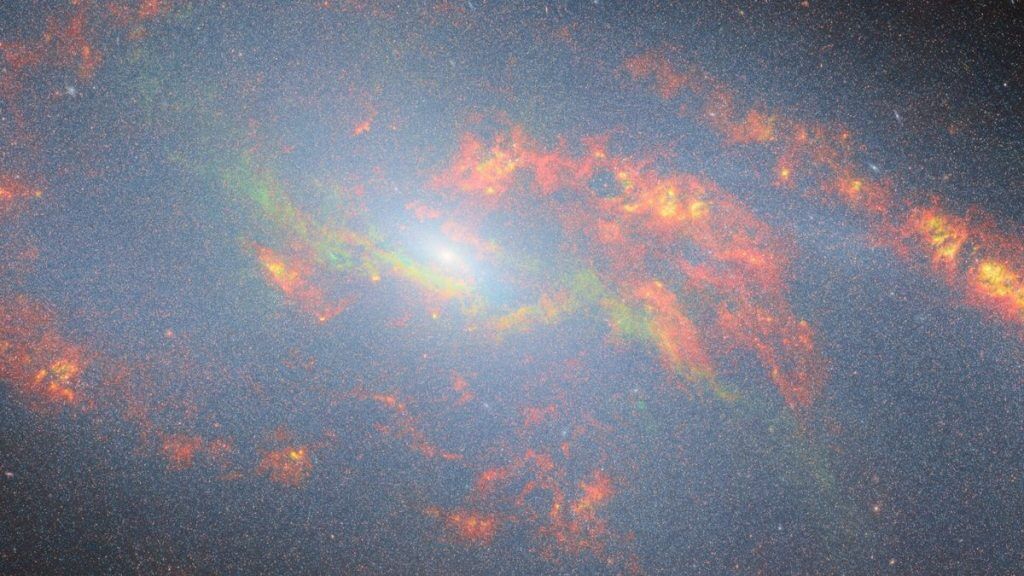Scientists with the European Space Agency (ESA) have released images of Messier 106, a nearby spiral galaxy located in the Canes Venatici constellation. Also known as NGC 4258, these sparkling images of Messier 106 were captured using the trailblazing James Webb Space Telescope.
The space-based observatory carries a sophisticated near-infrared camera on board, which allows it to see farther and deeper than any other telescope can — and, the farther into space we look, the older the objects we see. Light emitted by objects formed in the early universe experiences what scientists call a “redshift” while moving away from our vicinity of the cosmos, meaning those light wavelengths become elongated, moving from the visible part of the electromagnetic spectrum toward the invisible, infrared part.
From the outside, galaxies typically appear dense and impenetrable because stellar dust absorbs virtually all the visible light we can see. But infrared light is less hindered by dust and small particles, and because the James Webb Space Telescope can detect such light, it can penetrate previously obscured regions. In addition to numerous groundbreaking observations made in the last several years, the JWST’s breathtaking observations of Messier 106 are a testament to its enhanced capabilities.
At the newly imaged galaxy’s center, the telescope clearly captures a supermassive black hole — typically found at the center of large galaxies. What’s exciting about this one, though, is the fact that it is still quite active.
Related: James Webb Space Telescope finds a shock near supermassive black hole (image)
“Unlike the black hole at the center of the Milky Way, which pulls in wisps of gas only occasionally, Messier 106’s black hole is actively gobbling up material,” said ESA scientists in a press release. “As the gas spirals towards the black hole, it heats up and emits powerful radiation.”
The galaxy’s bright nucleus is visible as a bright region in the image, the light from which is emitted as dust and gas falls into the black hole. The galaxy’s “arms” are observed as sweeping streaks of glowing gas and dust in the image.
The blue regions are stellar dust scattered throughout the galaxy, while orange indicates warmer dust and the stronger red hues represent colder dust. The teal, green and yellow tones near the center of the image depict varying gas distributions.
Messier 106 possesses two more “invisible” arms that are visible only in the radio and X-ray wavelengths — these are composed of hot gas instead of stars and are believed to be a result of the black hole’s activity. “They are likely caused by outflowing material produced by the violent churning of gas around the black hole, creating a phenomenon analogous to a wave crashing up out of the ocean when it hits a rock near the shore.”
Observations such as these will help astronomers better understand important galactic processes such as star formation and black hole physics, to ultimately understand the nature and history of the universe.

